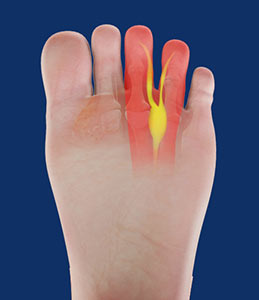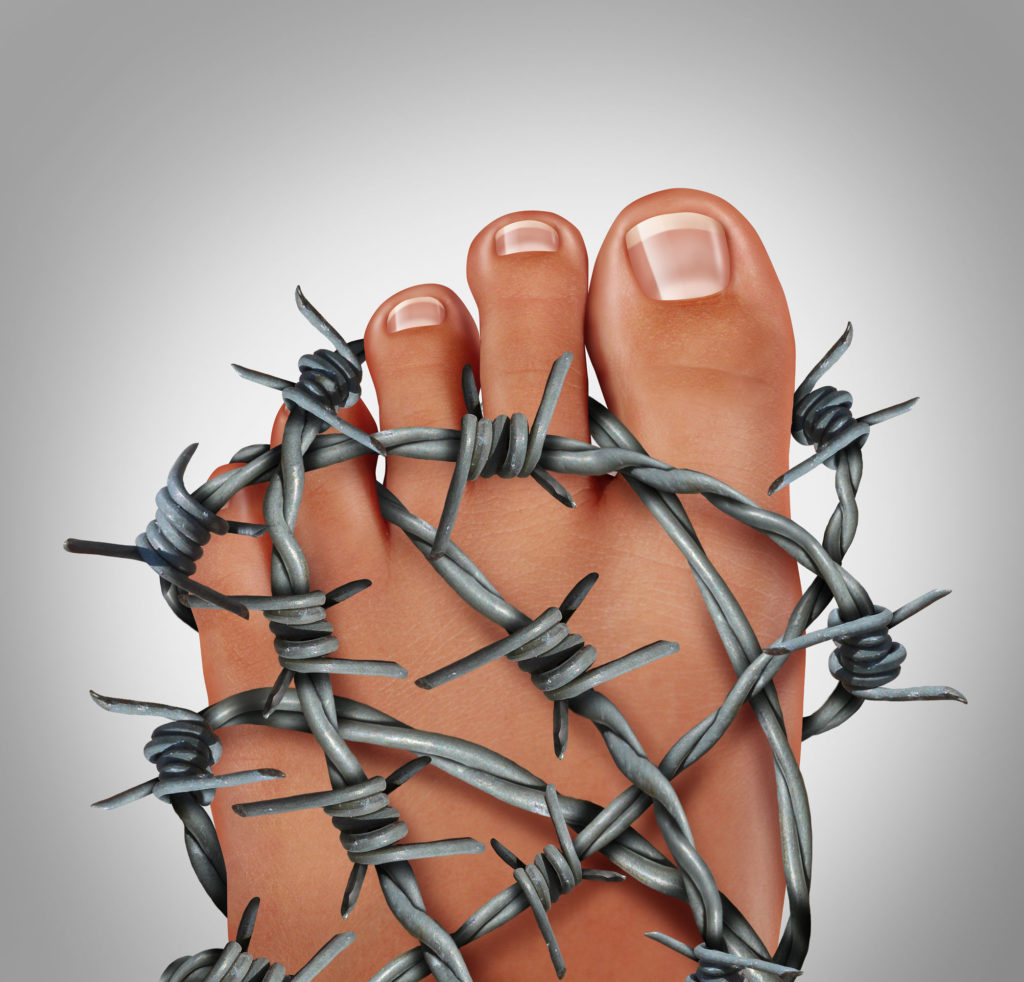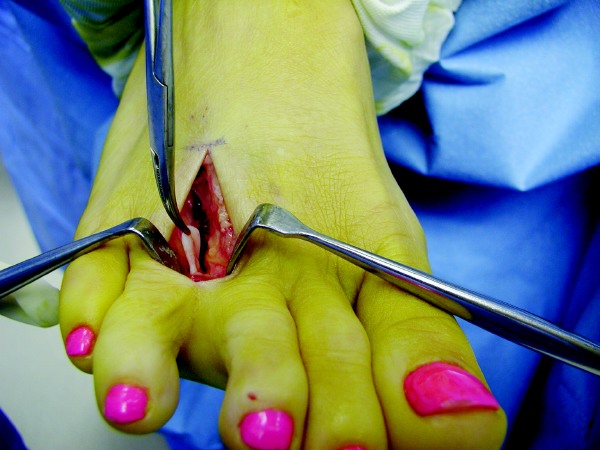CASE VIGNETTE – JUNE 2020
Wrong Site Surgery
I wonder how many of you have heard of the condition “Morton’s neuroma”?

A neuroma is a swelling on a nerve. Morton first described a swelling involving the confluence of two digital nerves between two toes on the forefoot. Typically, it occurs between the third and fourth toes where the digital nerves coalesce. The mechanical theory is that the slightly thickened confluence is squeezed between metatarsal heads as the patient ages, the distal transverse arch in the foot drops and the metatarsal heads become closer together.
The patient complains of burning dysaesthesia or sometimes numbness on either side of the neighbouring toes. The symptoms are made worse by standing and walking and are often best relieved by excision of the neuroma. This operative procedure results in permanent numbness in that web space and the adjacent sides of the two affected toes, but removes the burning dysaesthesia that is so unpleasant. In general terms, it is a very good operation.

Morton’s neuromas are not always between the third and fourth toes. They can appear between the first and second toes and rarely, between the fourth and fifth toes.
One of my mentors, a man who had a great positive influence upon my career, treated a neighbour with a Morton’s neuroma by operative excision. Unfortunately, he removed the confluence of nerves between two incorrect metatarsals. He removed this from between the second and third metatarsal heads, whereas the problem was in the interspace just lateral to that (between the third and fourth metatarsal heads).
Unsurprisingly, the patient was no better post operatively. My mentor, recognising the error, was completely transparent with the patient. He told her about the error that had occurred, that she required a second operation and he apologised profusely. He also sent her to me to perform the second operation.

The second operation was successful and the patient remains asymptomatic. The real issue is that the patient was put through two separate operations, with two separate periods of morbidity, additional expenses and loss of work time. The legal profession is likely to view my mentor’s actions as being of a negligent nature. A civil suit could easily have followed.
The patient did not sue. The matter was discussed at some length but without any coercion, she elected not to proceed in that direction. She said that she still had great admiration for my mentor and understood that mistakes can occur. She was also exceedingly impressed by his honesty, transparency and compassion. She simply let the matter go.

This was a very valuable professional lesson for me. Whilst uncommon, mistakes of this nature do occur. I have been involved in some at a personal level. To this day (and touch wood), I have never been sued. I think that is because the way in which I managed the error, rather than the error itself, has allowed me to proceed unscathed. “Sorry” is a very powerful word.
